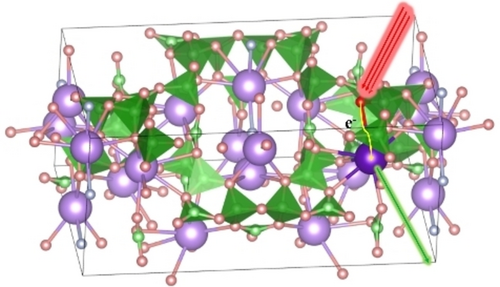The Microscopic Origin of Second Harmonic Generation Response: The Spatial Structure of Instantaneous Dipole Moments in Electron Excitation
Graphical Abstract
In the NLO materials reported herein, an electron transits from the oxygen atom of the valence state to the barium atom of the conduction state caused by the optical excitation. The charge transition generates instantaneous spatial dipole moments, which contribute to the projected SHG. Depending on the arrangement and ambience of the dipole moments, all microscopic SHG integrate into the macroscopic SHG response.
Abstract
A deep understanding on the crucial factors of the enhanced macroscopic second harmonic generation (SHG) in some deep-ultraviolet nonlinear optical (NLO) materials is needed to design new NLO materials. Since an optical process relates to the electron excitation and polarization simultaneously, the instantaneous dipole moments and their structures in excitation should be seriously taken account to seek the principal factor in SHG response. In this work, we study the Ba4B11O20F (BBOF), a NLO material, by using the orbital projection technique. From the projected SHG of our theoretic calculation, we recognize the principal dipole moment of the dominant influence on SHG and the relevant atom groups between which the dipole moment is accommodated. With the conclusion that the dipole moment with the most significant influence on SHG is the one between the oxygen–boron polyhedral anion group and barium cation, we predict that Ba4Al11O20F (BAOF) has a comparable SHG response.
Conflict of interest
The authors declare no conflict of interest.
Open Research
Data Availability Statement
The data that support the findings of this study are available from the corresponding author upon reasonable request.





